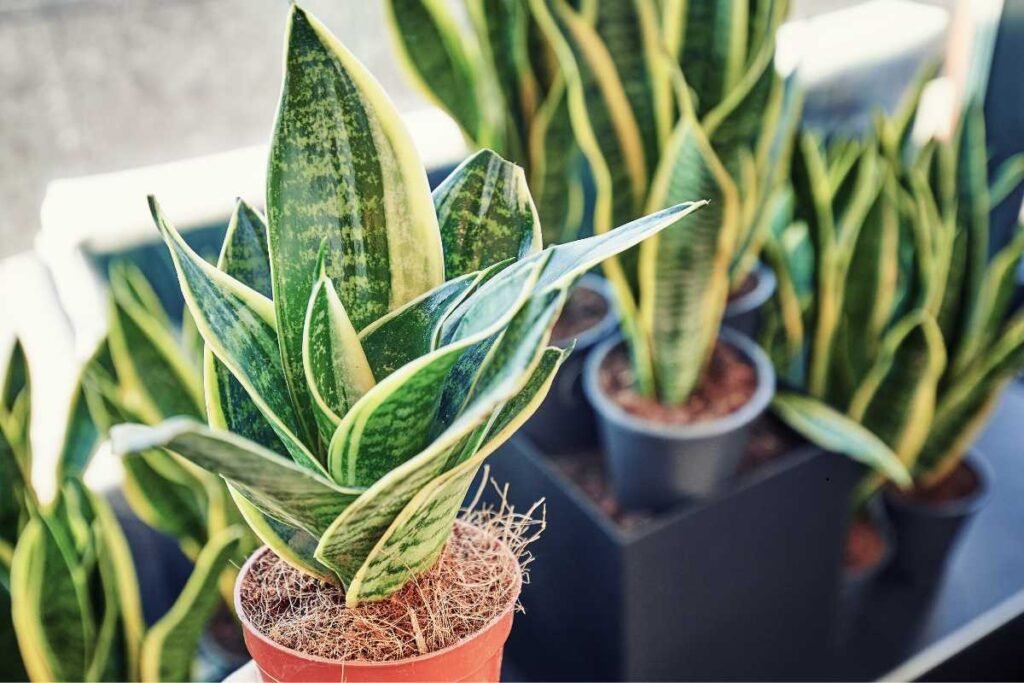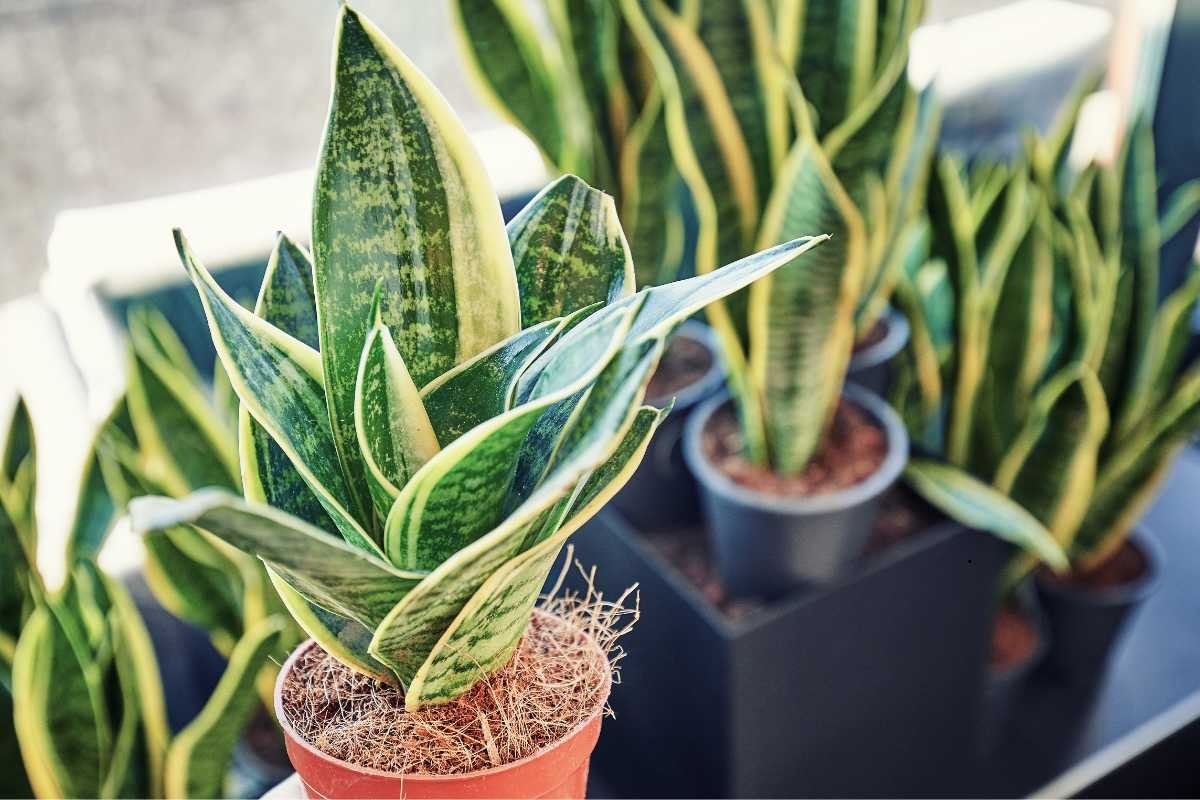The snake plant (Sansevieria trifasciata), also known as mother-in-law’s tongue, is one of the most recognizable and beloved houseplants in homes, offices, and public spaces.
This plant’s appeal is undeniable — it’s known for its attractive, upright leaves, easy maintenance, and air-purifying qualities. With all the hype surrounding its benefits, it seems like the perfect addition to any indoor space. But like every other plant, the snake plant comes with its own set of disadvantages and challenges.
In this post, we will explore the various disadvantages of snake plants in depth. From their potential toxicity to humans and pets to the problems of overwatering, pest infestations, and environmental concerns, we’ll discuss everything you need to know before bringing a snake plant into your life.
This blog post aims to offer a humanistic perspective, so you can weigh the pros and cons and make an informed decision.

Table of Contents
Toxicity: A Concern for Pets and Humans
One of the most significant disadvantages of snake plants is their toxicity. While they may look beautiful and harmless, they can pose serious health risks for pets and, to a lesser extent, humans.
Toxic to Pets
Snake plants contain saponins, natural compounds that act as a defense mechanism against pests and insects.
Unfortunately, these saponins are toxic to dogs, cats, and even horses if ingested. If your curious dog or cat decides to chew on the leaves of a snake plant, they may experience symptoms like:
- Vomiting
- Diarrhea
- Nausea
- Drooling
- Abdominal pain
In more severe cases, the ingestion of snake plant leaves can lead to lethargy, tremors, and loss of appetite. Even if the reaction is mild, it can be distressing for both the pet and the owner.
Toxic to Humans
While less dangerous to humans, snake plants can still pose risks, especially for young children who might put the leaves in their mouths.
Ingesting snake plant leaves can lead to nausea, vomiting, and mouth irritation. Some individuals might also experience mild allergic reactions upon contact with the sap, resulting in skin irritation or rashes.
Precautionary Measures
If you have pets or small children, you should think twice before getting a snake plant. If you already own one, keep it out of reach — place it on a high shelf, in a room where pets and children aren’t allowed, or use hanging planters.
Read: Do Snake Plants Purify the Air?
Overwatering Issues and Root Rot
Another major downside to owning a snake plant is its susceptibility to overwatering. While snake plants are praised for being drought-tolerant, this quality can backfire for plant owners who aren’t aware of the plant’s specific watering needs.
Why Overwatering is a Problem
Snake plants have rhizome-based roots that store water. They’re adapted to survive in arid conditions, meaning they do not need frequent watering.
When watered too often, their roots can become waterlogged, leading to root rot — a condition where the roots turn black, mushy, and begin to decay.
Signs of Overwatering and Root Rot
- Yellowing leaves: This is a common sign that your snake plant is receiving too much water.
- Mushy roots and leaves: If the roots and lower parts of the leaves feel soft and mushy, it’s a clear sign of rot.
- Foul odor: A rotting smell emanating from the soil is an indication of bacterial growth caused by excess moisture.
Prevention and Care
To avoid overwatering your snake plant:
- Allow the soil to dry out completely between waterings.
- Use a pot with good drainage holes.
- Consider using a well-draining potting mix, such as cactus soil.
If root rot sets in, you may need to cut away the damaged roots, repot the plant, and reduce watering.
Read: Is It OK to Sleep with a Snake Plant?
Slow Growth Rate
If you’re looking for a fast-growing plant to fill up empty spaces in your home, the snake plant may not be the best choice.
Why Snake Plants Grow Slowly
Snake plants are known for their slow growth, especially when kept indoors. They typically grow more quickly in their native outdoor environments, where they receive more sunlight and have better soil conditions. Indoors, the limited light and air circulation slow down their growth significantly.
Patience is Required
It can be frustrating for plant owners who expect lush, bushy growth from their snake plants. You might buy a small plant and find that it barely changes in size over several months or even years. This slow growth rate can be a disadvantage if you’re seeking instant or rapid decorative impact.
Encouraging Growth
To optimize your snake plant’s growth rate, make sure to:
- Provide bright, indirect light.
- Avoid placing it in overly cold or dark environments.
- Fertilize sparingly during the growing season (spring and summer).
However, even with optimal care, snake plants won’t grow as quickly as many other houseplants.
Pest Infestations
Snake plants are known for their resilience, but they are not immune to pests. Certain insects can cause damage to the plant and impact its health over time.
Common Pests
- Spider mites: These tiny pests feed on the sap of the snake plant, causing leaves to lose their vibrancy and develop yellow or brown spots.
- Mealybugs: White, cotton-like clusters on the leaves or at the base of the plant are signs of mealybugs, which also suck the plant’s sap.
- Scale insects: These pests appear as small, brownish bumps on the leaves and stems. They are hard to see initially but can cause significant damage over time.
Why Pests are a Problem
Pests weaken the plant, making it more susceptible to diseases and rot. They also detract from the snake plant’s appearance, turning what should be a striking, architectural plant into a damaged, unhealthy-looking one.
Treatment and Prevention
- Regular inspection: Check the leaves regularly for signs of pests.
- Insecticidal soap or neem oil: These can effectively treat pest infestations.
- Quarantine: Keep new plants away from your existing ones for a few weeks to ensure they’re pest-free.
Environmental Impact
While snake plants are celebrated for their air-purifying qualities, there is an ongoing debate about their overall environmental impact.
Air Purification Limitations
A study by NASA in the late 1980s found that snake plants, along with other houseplants, can remove toxins like formaldehyde and benzene from the air.
However, these studies were conducted in controlled laboratory environments, not typical home settings.
In reality, for a snake plant to make a significant impact on indoor air quality, you would need dozens, if not hundreds, of plants in a single room.
Therefore, the notion that one or two snake plants will substantially improve air quality is somewhat misleading.
Sustainability Concerns
Snake plants are often grown commercially and transported over long distances, which adds to their carbon footprint.
Additionally, plastic pots, synthetic fertilizers, and pesticides used in the mass production of snake plants can have negative environmental effects.
Ethical Considerations
If you’re an eco-conscious plant owner, consider purchasing snake plants from local growers who use sustainable practices. Repotting in biodegradable or recycled pots can also help reduce environmental impact.
Allergies and Respiratory Issues
Although snake plants are generally considered hypoallergenic, they can still pose risks for people with specific sensitivities.
Sap Allergies
Some individuals may be allergic to the plant’s sap. Direct contact with the sap can cause skin irritation, redness, or itching. People with sensitive skin or existing allergies should handle snake plants with care, using gloves when pruning or repotting.
Dust Accumulation
Snake plant leaves are rigid and flat, making them prone to dust buildup. For people with respiratory issues or dust allergies, a dusty plant can exacerbate symptoms.
Maintenance Tips
- Regularly wipe the leaves with a damp cloth to remove dust.
- Avoid placing the plant in bedrooms or areas where air circulation is limited.
Final Thoughts: Should You Still Get a Snake Plant?
Snake plants undoubtedly offer beauty, resilience, and low-maintenance appeal. However, as we’ve explored, they come with several disadvantages that potential owners should consider carefully.
If you have pets or small children, be mindful of the plant’s toxicity and ensure it’s placed out of their reach. The risk of nausea, vomiting, or irritation from accidental ingestion may outweigh the benefits for some households. Safety should always come first.
If you’re new to houseplants or struggle with overwatering, snake plants might pose a challenge. Though they are drought-tolerant, improper watering can quickly lead to root rot, which can be disheartening if you’re not familiar with their needs.
Their slow growth rate may also be a drawback if you’re looking for a fast-growing plant to transform your space quickly.
Additionally, while snake plants are generally pest-resistant, infestations can happen. If dealing with pests feels overwhelming or time-consuming, this plant might not be ideal for you.
Similarly, if you have sensitivities to plant sap or dust, you might want to consider an alternative with fewer potential allergy risks.
For those who are eco-conscious, it’s worth reflecting on the sustainability of sourcing snake plants and their limited ability to purify air in typical indoor environments. Supporting local nurseries and using sustainable practices can help mitigate these concerns, but the environmental impact is still something to keep in mind.
Ultimately, the decision to get a snake plant boils down to your specific lifestyle, environment, and needs. If you can manage the potential drawbacks and love the look of their striking, architectural leaves, a snake plant can still be a wonderful addition to your home.
For those willing to learn their quirks and care for them appropriately, they remain a durable and elegant houseplant choice.
But remember — every plant has its place, and it’s always okay to choose something that better aligns with your home, your habits, and your heart.
My name is Shahriar Robin, and my journey with plants began in childhood, igniting a lifelong passion that blossomed alongside my career as a nutritionist and sports trainer. Through SnakePlant.org, I channel this dedication, merging expertise from nutrition and sports training to nurture a platform sharing all-encompassing knowledge about Snake plants. This website mirrors my commitment to cultivating greenery, offering comprehensive insights on growth, maintenance, and nurturing practices for these captivating plants. My mission is rooted in leveraging diverse expertise to enhance plant care practices, believing profoundly in the therapeutic impact of nature. Join me on SnakePlant.org, where I unite a thriving community of enthusiasts, sharing experiences, insights, and the profound joys of planting.

